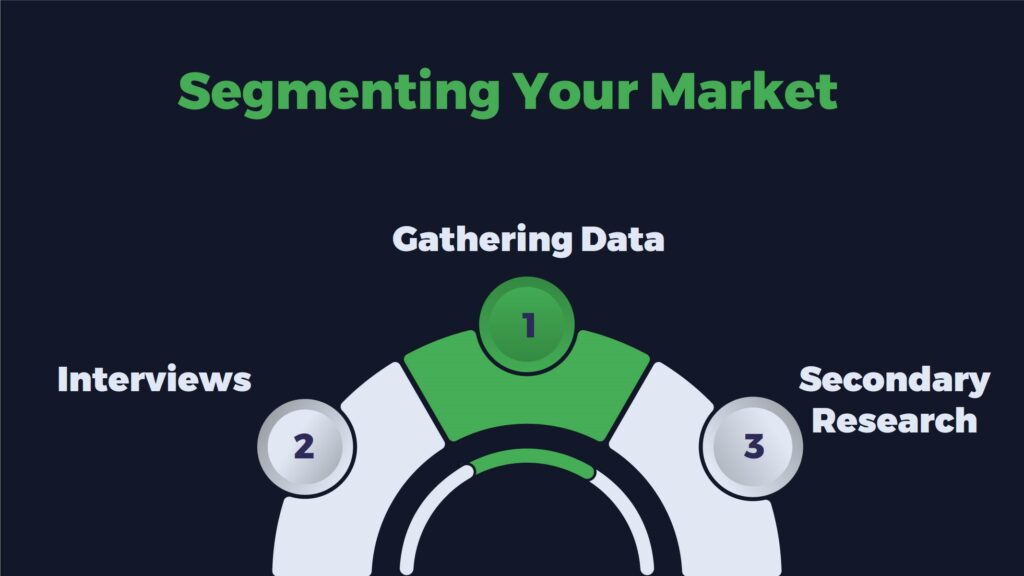How to Determine Your Market Size: A Comprehensive Guide
In today’s rapidly evolving business landscape, understanding your market size is crucial for making informed decisions, setting realistic goals, and crafting effective strategies. Whether you’re a startup looking to enter a new market or an established business aiming to expand, accurately gauging your market size is the first step toward success. This comprehensive guide will walk you through the process, providing valuable insights and actionable steps to determine your market size effectively.
- Why Market Size Matters
- The Impact of Market Size on Business Success
- Defining Your Market
- Segmenting Your Market
- Competitor Analysis
- Calculating Total Addressable Market (TAM)
- Estimating Serviceable Available Market (SAM)
- SAM vs. TAM
- Determining Share of Market (SOM)
- Competitive Analysis
- Analyzing Market Trends
- FAQs
- Conclusion
Why Market Size Matters
Understanding your market size is like having a compass in a dense forest; it guides you in the right direction. The size of your target market directly impacts your revenue potential, growth opportunities, and overall success. Whether you’re a budding entrepreneur or a seasoned business owner, knowing the lay of the land can be the difference between thriving and merely surviving.
The Impact of Market Size on Business Success
Imagine launching a high-end luxury brand in an area where the majority of consumers have limited disposable income. The disconnect between your product and the market’s capacity to afford it can be a recipe for failure. On the other hand, a thorough understanding of your market’s size enables you to tailor your offerings and strategies to maximize your chances of success.
Defining Your Market
Identifying Your Target Audience
The first step in determining market size is defining your target audience. Who are the people most likely to buy your product or service? Creating detailed buyer personas can help you paint a clear picture of your potential customers.
Segmenting Your Market
Market segmentation involves dividing your audience into distinct groups based on common characteristics. This segmentation allows for more precise targeting and a better understanding of the various customer segments within your reach.

Gathering Data
One effective way to gather primary data is through surveys and questionnaires. These tools allow you to collect specific information directly from your target audience.
Interviews
In-depth interviews with potential customers, industry experts, and competitors can provide valuable qualitative insights that quantitative data alone cannot capture.
Secondary Research
Secondary research involves gathering information from existing sources, such as market reports, industry publications, and academic studies. These sources can provide valuable data on market trends, demographics, and competitor analysis.
Competitor Analysis
Analyzing your competitors’ performance and market share can offer insights into the size and potential of your market. It can also help you identify gaps and opportunities to differentiate your business.
Calculating Total Addressable Market (TAM)
TAM Formula
To estimate your Total Addressable Market (TAM), you’ll need to use a straightforward formula:
TAM = Total Number of Potential Customers x Average Revenue per Customer
TAM represents the maximum revenue opportunity available in your market if you capture 100% of it. To get an accurate TAM figure, it’s essential to be realistic when determining the number of potential customers and their average spending habits.
Case Study: TAM Calculation
Let’s consider an example. Suppose you’re launching a new line of organic skincare products, and you’ve identified that there are approximately 10 million environmentally conscious consumers in your target region. On average, these consumers spend $50 per month on skincare products.
TAM = 10,000,000 potential customers x $50 average spend per month = $500,000,000 TAM
Your Total Addressable Market is worth $500 million annually in your target region.
Estimating Serviceable Available Market (SAM)
The Serviceable Available Market (SAM) represents the portion of the TAM that you can realistically target. When calculating SAM, it’s essential to consider factors such as geographical limitations, regulatory restrictions, and market competition.
SAM = TAM x Percentage of the Market You Can Reach
For instance, if you can realistically reach 20% of the market due to operational constraints and competition, your SAM would be:
SAM = $500,000,000 TAM x 20% = $100,000,000 SAM
So, your Serviceable Available Market is $100 million, representing the portion of the TAM that you can effectively serve.
SAM vs. TAM
Understanding the difference between SAM and TAM is vital. TAM is the total market potential, while SAM is the portion of that market you can realistically target and serve. This distinction is critical for setting achievable business goals and strategies.
Determining Share of Market (SOM)
Share of Market (SOM) is the portion of the SAM that your business can capture. It’s a key indicator of your market competitiveness and growth potential.
SOM = Your Company’s Revenue / SAM
For instance, if your skincare product line generates $20 million in revenue within your SAM:
SOM = $20,000,000 Your Company’s Revenue / $100,000,000 SAM = 20% SOM
This means your business currently holds a 20% share of the Serviceable Available Market.
Competitive Analysis
Analyzing your competitors’ market share and strategies can help you identify opportunities to increase your SOM. By understanding what your competitors are doing well and where they fall short, you can refine your own strategies for greater success.
Analyzing Market Trends
Evaluating the growth rate of your target market is crucial. A rapidly growing market can offer more opportunities for expansion and profitability. Conversely, a stagnant or declining market may require a different approach.
Market Saturation
Assessing the saturation level of your market helps determine how much room there is for new entrants. A highly saturated market may be challenging to penetrate, while an underserved market may offer more growth potential.
Ready to take your capital-raising journey to the next level? Choose Easy Capraise and experience the difference. Contact us today to unlock your business’s full potential and secure funding from the right investors!
FAQs
Why is market size important for startups?
Understanding market size helps startups identify their potential customer base and assess their product or service demand. It guides resource allocation and strategic planning, increasing the chances of success.
What are some common challenges in determining market size?
Common challenges include limited data availability, changing market conditions, and accurately estimating potential customer numbers and spending habits.
Can the market size change over time?
Yes, market size can change due to factors like economic shifts, technological advancements, and changes in consumer behavior. Regular market analysis is essential to stay updated.
How often should I revisit my market size analysis?
Market size analysis should be revisited regularly, especially when significant market changes occur or when your business plan evolves.
Are there any tools or software to help with market size estimation?
Several market research tools and software programs can assist with data collection, analysis, and market size estimation. Some popular options include Statista, SEMrush, and Nielsen.
Conclusion
In conclusion, determining your market size is a fundamental step in building a successful business strategy. By defining your market, gathering data, calculating TAM, SAM, and SOM, and staying updated on market trends, you can make informed decisions and set realistic goals for your business.
Remember that market size analysis is an ongoing process. Markets evolve, and your business must adapt to changes in customer behavior, competition, and external factors. Continuously reevaluate your market size to stay ahead in your industry.
Contact us
Good to have you here! If you have any queries, please leave your message. Our team will reach out soon:)
.








